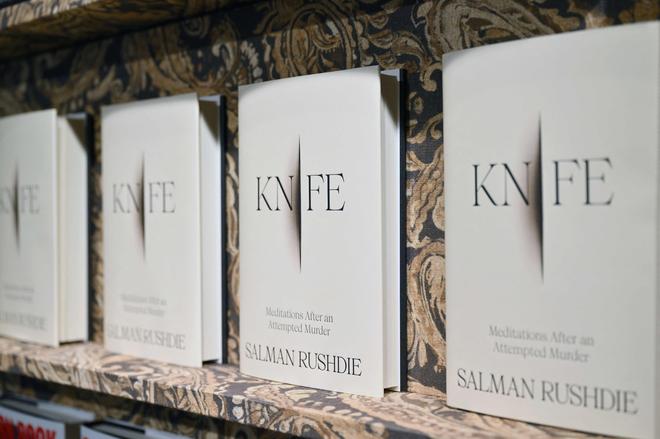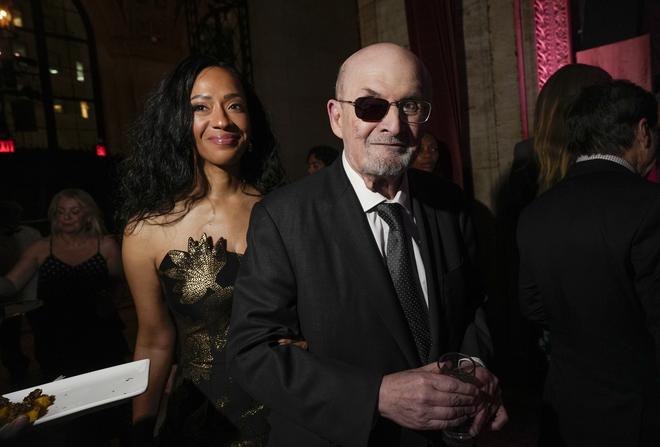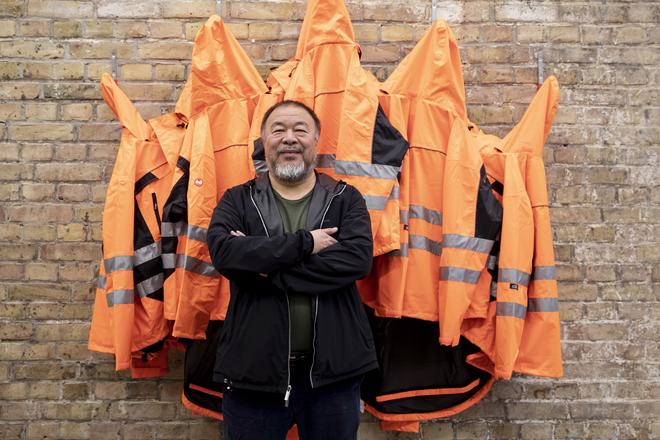‘Art is a nail in the eye, a spike in the flesh’. When Chinese dissident artist Ai Weiwei wrote this in his autobiography 1000 years of Joys and Sorrows, he was referring to the idea that art can be used as serious provocation, ‘a deliberate disruption that destabilizes the settled and the secure’.
On August 12, 2022, Salman Rushdie received a knife in his right eye. It was not the act of artistic courage alluded to by Weiwei, but a cowardly act of a self-proclaimed assassin on an intellectual warpath with his now one-eyed victim. Rushdie had come to the small Upstate New York town of Chautauqua to give a talk on the freedom to speak and write freely. His assailant had come 33 years after the infamous fatwa issued by Ayatollah Khomeini and — after the attack — left with blood on his hands and a more compelling book on the stands.
Knife: Meditations After an Attempted Murder (2024) was not the line of expected literature from Rushdie, and unlike the author’s numerous imaginary retellings of the Arabian Nights, it carried a sharp personal recall of his recent dying moment — a moment that lasted 27 seconds.

Out of the thousands of well-known and established artists in the world, why do these two, Rushdie and Weiwei, stand apart? Why is their work so critical to life today? For two reasons. First, despite enormous threats to their life, they remain steadfastly courageous. Rushdie had been in protective house arrest in England for a decade, and now, 23 years after his release, was attacked while delivering a talk on the importance of writers’ safety. Conversely, for long periods, China’s totalitarian regime had beaten, arrested and imprisoned Weiwei for defying their authority in his art, something that pushed him instead into a new reckless boldness. Second, and more importantly, the two are among a miniscule minority that use art not as a medium of self-satisfaction, but an instrument of politics and opinion. What gives strength to Rushdie’s writing, and to Weiwei’s sculpture or installation is its capacity to breach political borders, thus creating new benchmarks that enlarge the public imagination.
My country — my bane, my muse
Parallels between the two are filled with curious storylines, and unusual ironies. In all the years of their individual practices in writing and art, both Rushdie and Weiwei have lived according to their own rules. Both have been critical of their homeland for precisely the same reason: the opaque Communist regime in China, and the growing repression in India.

Yet despite their long association with the West (Rushdie now lives in New York and Weiwei in Portugal), both draw immense creative sustenance from their country of origin. In fact, both have done their best work as an indirect correlation with national and childhood memories. Rushdie protects freedom of speech in a country that allows him to speak freely and write stories with wild and unencumbered imagination. But he also talks of an India that once was, and has now reshaped and stifled itself.
Weiwei confronts the most feared and repressive tendencies of China with an equally carefree and deliberate political directness. Like Rushdie’s Knife, there are no two ways to interpret his work. In 2010, Weiwei dropped a valuable historic vase, and filmed its shattering, thus making an artistic reference to the values of the Cultural Revolution; then, as western commerce made inroads into China, he painted the familiar Coca Cola sign on another Han Dynasty urn. Later, in a German exhibition he displayed school bags collected from students who died in the Sichuan earthquake. More recently, struck by the plights of refugees, he sculpted a massive boatload of immobile strangers, also making a personal film of Syrian migrants.

There is no denying the sheer optimism that emerges in the work of these two unconnected artists. That fear has not driven them either mad, or somewhere deep underground is the test of a resilience that keeps them both feverishly active, yet deeply secretive. Intensely political, intensely humane, every work that emerges from the studio or the study is also wholly new, exceptional and experimental.
Yet, it is a strange paradox that by far the most valuable work of art for either Rushdie or Weiwei is, in fact, their own life. 1000 Years of Joys and Sorrows (2021) is as much Weiwei’s story as China’s. A childhood in desolate exile spent with his poet father in little Siberia. ‘Disdain is a chasm no power can cross,’ said the artist, referring to his Chinese experience.

Rushdie’s Knife is an instrument that cuts skin, but gives new meaning to life and language. ‘Living was my victory,’ he wrote, ‘but the meaning the knife had given my life was my defeat,’ Rushdie’s non-fiction is as direct and cutting as his fiction is imaginative and surreal, often with storylines cloaked in biting satire.
Why middle India is afraid
In much of the western world, and even in our overly protected and insular middle Indian society, art merely functions as a brief and fleeting departure from reality. Public writing, public comedy, and public art address a minuscule minority. Closeted and often remarkable only as visual experience, most writers and artists are afraid of provocation. So, the essential call to big and bold artistic freedom disappears, and submerges into muted applause in closed galleries, government approved and stamped. Art remains a livelihood rather than an act of liberation.
As a society, middle India is now afraid. Not because of the current state of politics, not for the absence of intellectual debate and academic discourse. There are enough journalists in the media to remind us of our rights; enough lawyers and judges to connect us to the Constitution. No, middle India is afraid because the real artists — the writer, the painter, the sculptor, the comedian — are missing. Missing above ground and underground. The country is poorer for the lack of a Rushdie or a Weiwei.
The writer is an architect. His book, New Improved Punjabi Baroque, is to be released soon.







